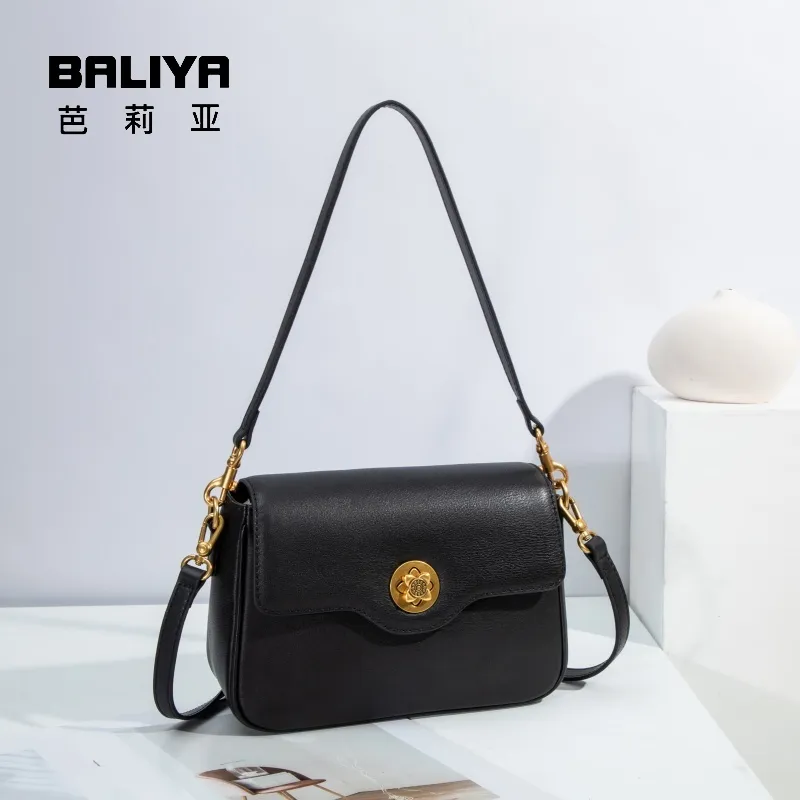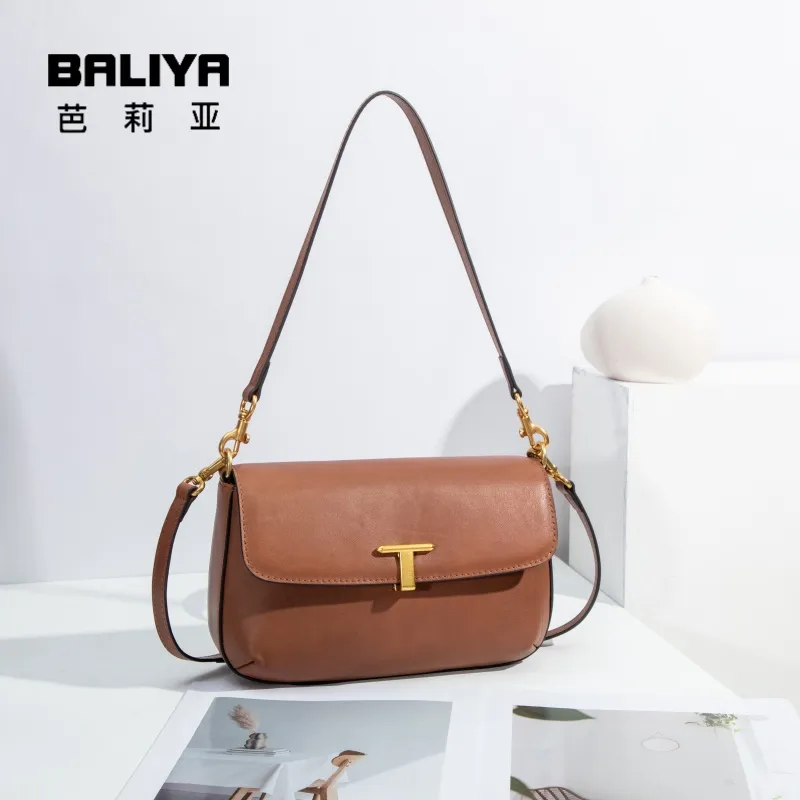When it comes to choosing the perfect material for a bag, leather stands out as a timeless and durable option. Among the various types of leather available, two popular choices often spark debates: top grain leather vs full grain leather. Both have their unique characteristics, and understanding their differences can help you make an informed decision when selecting a bag that suits your needs and preferences. In this blog, we’ll delve into the details of these two leathers, exploring their surface textures, craftsmanship, durability, and more, to help you determine which one is better for bags.
To start, it’s essential to grasp the fundamental differences between top grain and full grain leather, as these distinctions lay the groundwork for their performance in bag making. Both fall under the umbrella of high-quality leathers, but their processing methods create distinct properties.
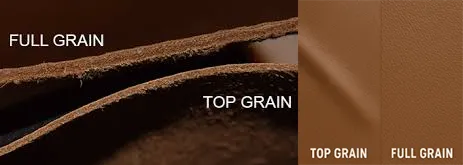
Leather is derived from animal hides, which consist of multiple layers. The outermost layer, known as the grain layer, is the strongest and most durable part of the hide, as it’s exposed to the elements and contains tightly packed fibers. Full grain leather includes this entire grain layer, retaining all the natural markings, pores, and imperfections that give each piece its unique character. In contrast, top grain leather is created by sanding or buffing away the outermost part of the grain layer to remove blemishes, resulting in a smoother surface.
When considering types of leather for bags, full grain and top grain are both premium options, but they cater to different tastes. Full grain leather is often favored by purists who appreciate its natural look and ability to develop a rich patina over time. Top grain leather, on the other hand, appeals to those who prefer a more uniform and sleek appearance, as the buffing process creates a consistent surface that’s less prone to showing minor scratches initially.
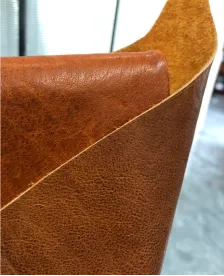
The surface patterns of leather are one of its most defining features, influencing both its aesthetic appeal and how it ages. Let’s compare the patterns of top grain and full grain leather to see how they differ.
Full grain leather boasts a surface that’s untouched by heavy processing, preserving all the natural patterns, pores, and markings from the animal’s hide. These can include scars, insect bites, or variations in texture, which add to the leather’s uniqueness. Over time, as the leather is exposed to oils from your hands and the environment, it develops a beautiful patina—a soft, glossy layer that deepens the color and enhances the patterns, making the bag look even more distinctive with age.
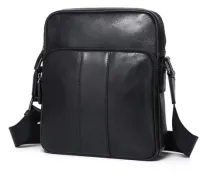
Top grain leather, after the sanding process, has a much smoother surface with a more consistent pattern. The natural pores are often less visible, and the overall texture is more even. While this gives the leather a polished appearance, it also means it has less of the natural character found in full grain leather. The patina development in top grain leather is slower and less pronounced, as the buffing removes some of the layers that would otherwise interact with oils and develop that rich, aged look.
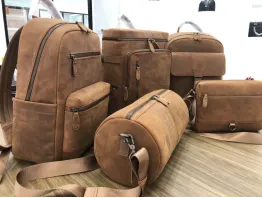
The craftsmanship details involved in creating top grain and full grain leather play a significant role in their durability, appearance, and functionality as bag materials.
Full grain leather undergoes minimal processing—just enough to clean and tan the hide without altering the grain layer. This preservation of the natural fiber structure makes it incredibly strong and resistant to wear and tear. The tight fiber network ensures that the leather can withstand daily use, making it an excellent choice for bags that need to hold heavy items or endure frequent handling. Additionally, the natural oils in full grain leather help it remain supple over time, reducing the risk of cracking.
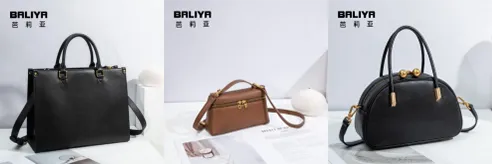
Top grain leather requires more processing than full grain, with the sanding step to smooth the surface. After buffing, it’s often treated with a protective coating to enhance its resistance to stains and water. While this coating adds a layer of protection, it can also make the leather slightly stiffer initially compared to full grain. However, the processing does make top grain leather more resistant to minor scratches in the short term, as the coating and smoother surface are less likely to catch on rough edges.
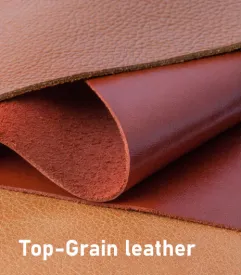
Durability is a key factor when choosing a leather bag, as you want an accessory that will last for years. Let’s put top grain and full grain leather through some virtual durability tests to see how they perform.
In terms of overall strength, full grain leather has the edge. Its unaltered grain layer with tightly packed fibers makes it highly resistant to stretching and tearing. Even with heavy use, full grain leather bags maintain their shape and structural integrity. Top grain leather, while still durable, is slightly less robust because the sanding process removes some of the strong outer fibers. Over time, with repeated stress, top grain leather may show signs of wear more quickly, such as creasing or thinning in high-friction areas like handles.
How to remove scratches from leather bag?No matter how careful you are, leather bags are bound to get scratched. When it comes to handling scratches, the approach differs slightly for top grain and full grain leather. For full grain leather, minor scratches can often be buffed out with a soft cloth and a small amount of leather conditioner, as the natural oils in the leather help to blend the scratch into the surrounding area. For deeper scratches, a leather repair kit with pigmented polish can be used to fill in the gap.
For top grain leather, the protective coating means that minor scratches are less noticeable initially, but once the coating is scratched through, the damage can be more apparent. To remove scratches from a top grain leather bag, start by cleaning the area with a damp cloth, then apply a leather conditioner to moisturize the leather. For deeper scratches, use a color-matched leather filler to smooth the surface before buffing with a soft cloth. It’s important to note that while both leathers can be repaired, full grain leather’s natural texture makes it more forgiving of minor damage, as scratches often blend into the patina over time.
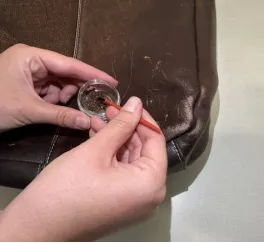
Ultimately, the decision between top grain leather vs full grain leather for your bag comes down to your personal preferences and needs. If you value a natural, unique look that improves with age and don’t mind some initial imperfections, full grain leather is an excellent choice. Its superior durability ensures that your bag will last for decades, developing a character that’s truly one-of-a-kind.
On the other hand, if you prefer a sleek, uniform appearance with added resistance to minor scratches in the short term, top grain leather might be more suitable. It’s still a high-quality option that offers good durability, making it a practical choice for everyday use.
No matter which type you choose, understanding the differences in surface patterns, craftsmanship details, and durability will help you care for your leather bag properly—whether that means knowing how to remove scratches from a leather bag or simply allowing it to develop a beautiful patina over time. Both top grain and full grain leather have their place in the world of bag making, and each can be the perfect fit for the right person.
